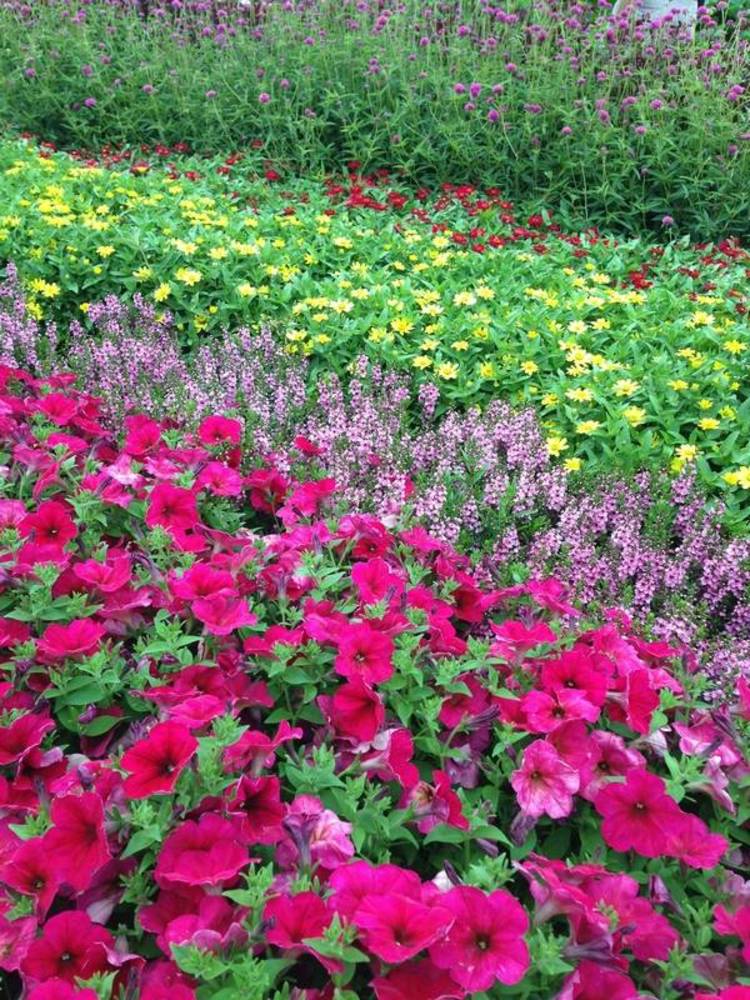
The Sunday Mail


When planting your annuals it is always best to group the same colours for a better effect than mixed colours
Summer beckons.
It is that time that most trees send out new leaves and colourful blooms blossom. Summer time is the season to plant your favourite annuals.
Annuals are temporary plants in our garden defined as plants that will complete their life cycle in one year unlike perennials which are around much longer. They are some of the most colourful group of plants in our garden that will reward our efforts with a variety of colourful flowers.
It would be nice to have a whole garden with annuals but this would mean a lot of work for you so this is not advisable.
Plant annuals in key positions such as entrances, in pots, portions of borders and gap fillers whilst your other plants grow. Annuals planted at the bottom of trees and palms really add life to your lawn. Hanging baskets are also another great way to show case your annuals.
When planting your annuals it is always best to group the same colours for a better effect than mixed colours.
If you are dollar conscious like me you would prefer to raise your own seedlings but if you are pressed for time purchase your plants at the nearest garden centre. Most annuals can be sown easily directly into their positions but for the ones with very fine seed it is best to raise these in seed boxes or trays.
Broadcast or sow seeds in lines 15cm apart. Bring the soil to a very fine tilth before sowing preferably adding well rotten compost. You can then thin out the plants to a spacing ranging from 10-30cm. If seedlings have been sown outdoors it may be necessary to water daily but with a watering can with a fine rose or garden sprinkler.
If sowing in seed boxes or trays sprinkle the seed and cover with sieved fine soil. Place a glass covering over the box or plastic sheeting. As soon as germination occurs remove the covering.
Avoid over-watering for all the seedlings as this will cause damping off which is a fungal infection resulting in the death of plants. Now let us move to land preparation for annuals.
Annuals are mostly shallow-rooted. What will suffice is to dig out the topsoil then loosen the subsoil. Add compost and fertiliser to subsoil and consolidate. Mix compost and fertiliser with the topsoil as well then place the topsoil back into the flower bed.
Before we conclude, which plants are the annuals to choose from? Most people usually grow annuals for cut flower purposes.
These can be calendula, marigold, nasturtium, helichrysum, aster, chrysanthemum, phlox, statice, sweet pea, antirrhinum and zinnia.
Your sweet pea and morning glory are good climbing annuals to add colour to that small demarcating fence. Plant your petunias, phlox, alyssum, coleus, lobelia, dwarf marigold, lobelia, ageratum, nasturtium and verbena in your window boxes or hanging baskets.
Other annuals that have not been mentioned here are ammi-majus, amaranthus, arctotis, bellis, celosia, clarkia, dianthus, felicia, digitalis, kochia, nicotiana, ursinia, begonia and impatiens for shady places. So this spring take time to enjoy the colour of annuals in your garden!
Andrew Mangwarara is a horticulturist by profession and can be reached by email at [email protected]



